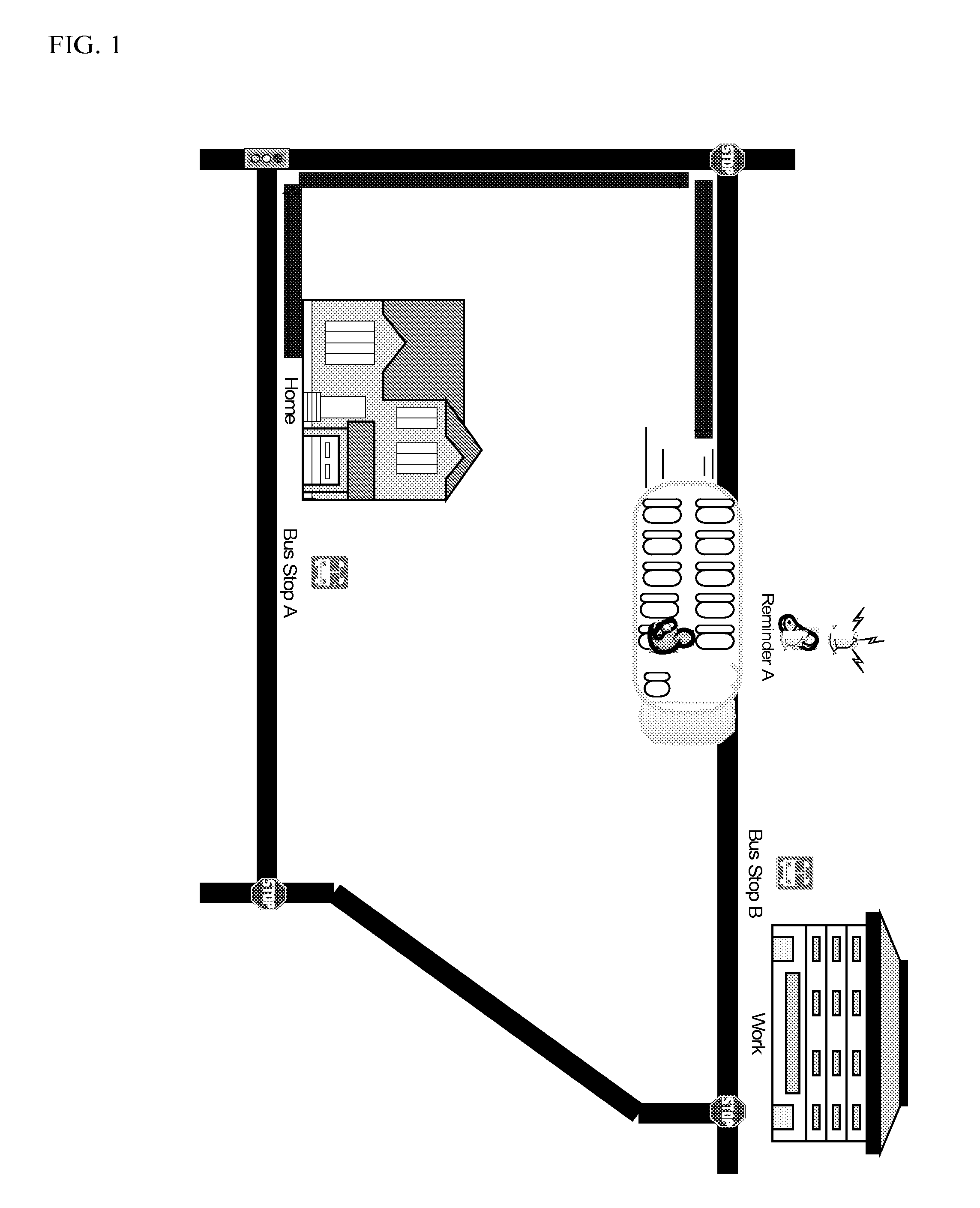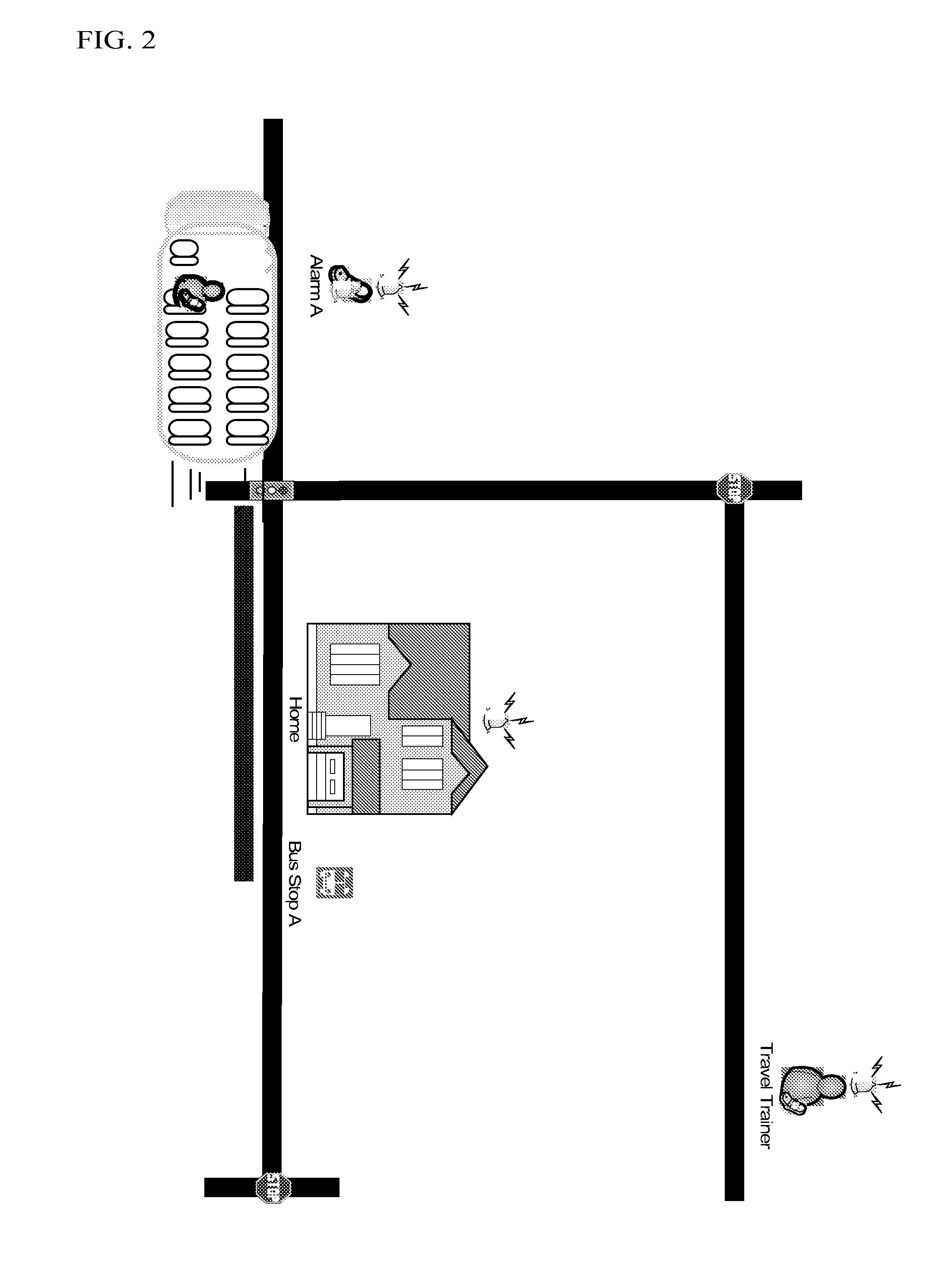Travel assistant device
a technology of assistant devices and travel aids, applied in the field of global positioning systems, can solve the problems of failing sight or hearing, unable to reach, and remain trapped in their homes, so as to facilitate the delivery of signals and safely and effectively use the transit system
- Summary
- Abstract
- Description
- Claims
- Application Information
AI Technical Summary
Benefits of technology
Problems solved by technology
Method used
Image
Examples
example 1
Integration of TAD with the AVL System
[0028]The Travel Assistant Device (TAD), a GPS-enabled mobile phone application, will be developed by integrating communication with an Automatic Vehicle Location (AVL) system for transit vehicles into the TAD system. The TAD software prototype uses commercially-available multimedia cell phones with built-in Global Positioning Systems (GPS) to aid new transit riders, especially those who are cognitively disabled. Informational prompts will be delivered to the rider in a “just-in-time” method that will trigger the phone to ring, vibrate or deliver an audio message when the rider should pull the stop cord and get off the bus. Automated alarms can be triggered and the travel trainer and / or parent remotely alerted in case a rider wanders off their pre-determined path.
[0029]An important feature of the design is the communication between the TAD and an AVL system. This communication will support advanced TAD features based on the real-time location of...
PUM
 Login to View More
Login to View More Abstract
Description
Claims
Application Information
 Login to View More
Login to View More - R&D
- Intellectual Property
- Life Sciences
- Materials
- Tech Scout
- Unparalleled Data Quality
- Higher Quality Content
- 60% Fewer Hallucinations
Browse by: Latest US Patents, China's latest patents, Technical Efficacy Thesaurus, Application Domain, Technology Topic, Popular Technical Reports.
© 2025 PatSnap. All rights reserved.Legal|Privacy policy|Modern Slavery Act Transparency Statement|Sitemap|About US| Contact US: help@patsnap.com



